How to eliminate clogging in the bathroom: an overview of the best ways to clean the sewer
Clogging is a problem that sooner or later all owners of both apartment buildings and suburban cottages face. But to solve a sudden adversity, it is not always possible to attract a professional master.
Let's consider in more detail how to eliminate the blockage in the bathroom on our own and what measures to carry out in the future to prevent problems,
The content of the article:
Find out the cause of blockages
Any blockage is formed due to a violation of the established rules for the operation of the sewer. In multi-storey buildings, the blockage can be local - within the limits of one apartment, or it can be common when the common sewer line is blocked.
The reason for creating a clogged pipe in the bathroom may be:
- subsidence on the walls of mud clumps formed from particles of small debris and hair;
- layering of fatty deposits on the pipes;
- insufficiently maintained pipe slope at the installation stage;
- deterioration of the sewer system as a whole.
Households can not always keep track of what settles on the drain grate. Animal hair, fabric fibers and long hair, together with waste water, drain into the drain hole and get stuck in it.
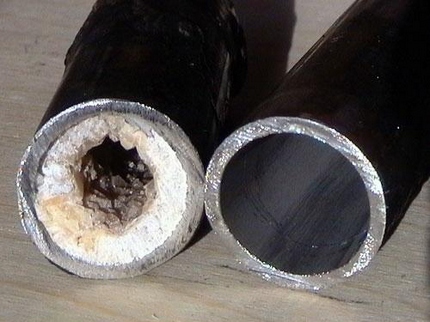
Choosing the best way to eliminate local sewage blockage within the apartment depends on the size of the mud "plug". The general blockage, most likely, will have to be eliminated with the use of professional equipment.
Mechanical methods of elimination
The fight against clogging the pipe passage channel must be started as soon as even a slight stagnation of water is detected. You can solve the problem by applying one of the methods described below. To achieve the maximum effect, it is worth trying to apply two approaches at once, by performing mechanical and then dry cleaning.
Often, to combat clogging, it is enough to perform simple manipulations, as in the example of removing a cork from a siphon with a semi-automatic overflow:
If the situation is more serious than described, then you need to use more cardinal means of cleaning.
Using a rubber plunger
The easiest and most gentle way to eliminate small blockages is to use a plunger. The tool can be equipped with an elastic flat washer or cone-shaped nozzle. The shape of the rubber bowl of the tool is selected depending on what degree of compression is required on the cleaned assembly.
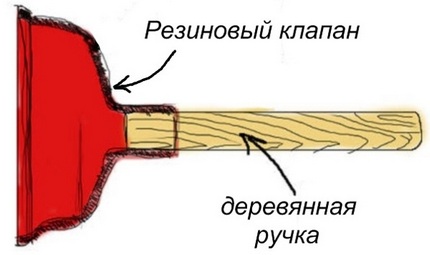
When choosing this method of eliminating the problem, it is worth considering that it is much more difficult to break through a mud plug with a plunger through the drain hole of a bath bowl than through a sink drain.
This is due to the design of the bathroom drain, complemented by an overflow hole. When a blockage occurs and water overflows over the edge, air accumulates inside the opening, while a vacuum is required to work with the plunger.
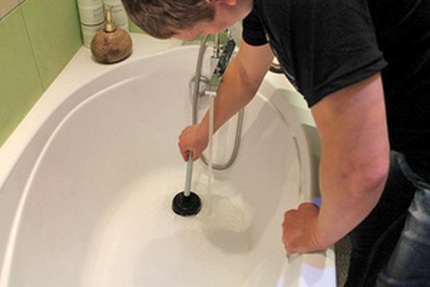
Before a plunger punches a blockage in the bathroom, the overflow hole must be tightly closed. This can be done with a rubber stopper or a fabric cut folded into several layers.
Some craftsmen use another plunger to close the hole. But in this case, the work should be performed by two: one covers the overflow, the other cleans the drain.
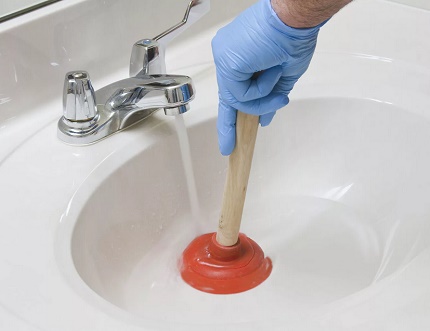
The work to eliminate the blockage is performed in several stages:
- Press the plunger bowl tightly so that it completely overlaps the drain hole.
- 10-12 sharp reciprocating movements are made, without tearing off the nozzle from the surface so that the air abruptly moves towards the drain hole, and the blockage is fragmented.
- A sharp movement remove the tool from the drain. Open the water and wash the pipe with crushed mud.
If the applied efforts did not bring the desired effect, it is worth trying to push the mud seal not with air, but with water. For this purpose, 10-15 liters of hot water are poured into the bath so that it covers the rubber bowl of the instrument by 2/3. The plunger is immersed in water at an angle and produce several reciprocating movements.
With the last “swing”, the tool is sharply removed from the water and observe whether it begins to sink into the drain. If necessary, the procedure is repeated 3-4 times.
Cleaning the outlet into the sewer is carried out according to the following technology:
The use of plumbing cable
To eliminate more global blockages, apply plumbing cablemade of galvanized steel metal. The only thing is that it should be used with great caution for cleaning chrome and polymer pipes, the inner surface of which can be damaged when exposed to the sharp ends of the brush.
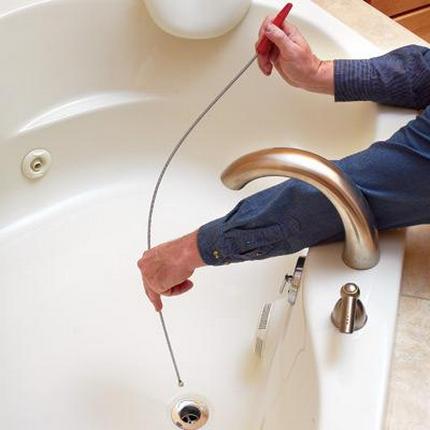
For work, you can use the factory tool as a rope, and spring-loaded version. The wizard’s task is to hook the blocking object and pull it out with the help of a brush or hook located at the end of the tool, or, on the contrary, push it into the wider part of the highway.
For lack of the opportunity to purchase a tool, it can be done independently. To do this, take a two-three-meter section of a flexible metal cable, the end of it is slightly “fluffed up”, forming an impromptu brush.
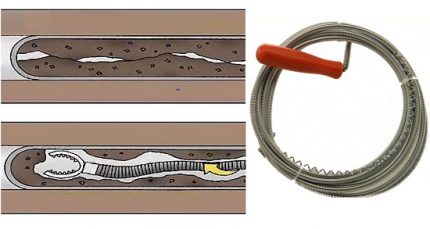
Before you clean a tight blockage in the bathroom, you must carefully inspect the tool for mechanical damage. Bushings located near the handle of the cable, it is desirable to lubricate.
Cleaning using a cable is performed in the following sequence:
- The tip of the cable is buried in the drain hole, clamping the handle of the tool in the hand.
- Push the cable, making rotational movements.
- Upon reaching the clogged area perform a couple of sharp jerks back and forth, increasing pressure.
- Carefully remove the cable, picking up the garbage nozzle.
- Open the faucet and let hot water in order to flush the pipe with a crushed plug.
When cleaning the mud plug, the plumbing cable must be in a taut state. The rotation of the tool during the pushing process contributes to the rapid destruction of the cork.
Siphon cleaning
Water stagnation, accompanied by the appearance of a characteristic unpleasant odor, may indicate that a plug formed in the walls of the siphon. This structural element performs two tasks at once: it prevents the penetration of sewer odors and protects the system from foreign objects.
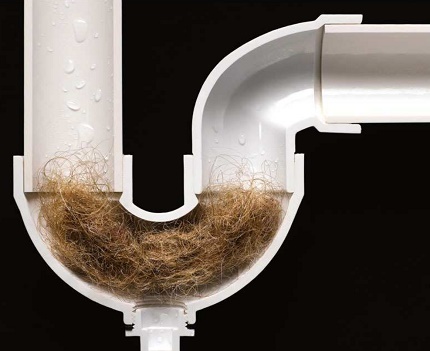
Before disassembling the siphon, immediately below its location, it is necessary to spread a piece of old cotton fabric that absorbs moisture well.
The siphon is cleaned in the following sequence:
- A container with low sides is installed under the siphon location, where liquid will flow from the disassembled design.
- Unscrew the lock nut and disconnect the flask from the outgoing pipe.
- From the flask, drain the water that performed the function water seal.
- At the siphon, the bottom is unscrewed and cleaned of accumulated deposits, wiping the surface from the inside with a sponge and washing it with a stream of water.
- The flask is installed in its original place, docking with the outgoing pipe.
- The faucet is opened so that water fills the water seal and the integrity of the connections is checked.
When assembling the structure and installing the flask in its original place, it is important to place it so that the drain pipe does not rest on it. If you do not adhere to this requirement, when the system starts, the water seal will be broken. As a result, a persistent sewer smell, which is quite difficult to get rid of in the short term.

Lumps of garbage removed from the siphon should not be lowered into the sewer so as not to clog the system. They should be disposed of like household waste.
Faithful helpers - chemicals
The modern market offers a lot of ready-made products that allow you to decide how to effectively remove blockage in the bathroom. The active ingredients of the formulations are able to soften and destroy plugs from organic deposits.
They are issued in the form of:
- liquid concentrates;
- semi-liquid gels and foam;
- dry powders.
The main thing when working with chemicals is to withstand the concentration specified by the manufacturer and the waiting time. Even the safest cleaning compounds able to have a beneficial effect only within a certain time period.
With prolonged contact, they can even cause deformation of the material from which the pipes are made.
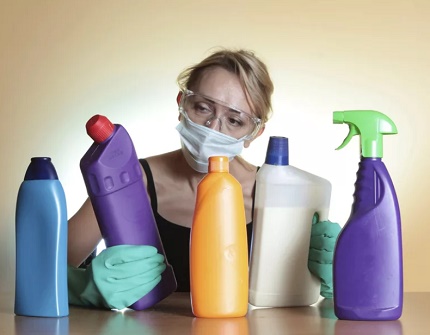
Use finished preparations pretty easy. They are simply poured into the drain hole and wait for the time specified by the manufacturer. Then they open the tap and rinse the pipes with plenty of water.
If a powder composition is selected for cleaning, after falling asleep in the drain cavity, it is poured with a small portion of water and wait for the time specified by the manufacturer. Further, as with liquid formulations, the system is washed with a copious portion of warm water.
The most popular drugs for sewage flushing from leading manufacturers that have worked well in terms of eliminating blockages:
- "Mole" - a liquid concentrate based on sodium hydroxide and modified acetic acid, easily eliminates fat deposits. Due to the aggressiveness of the components of the composition, it cannot be used for processing plastic pipes.
- “Tiret” - gel-like composition quickly and effectively eliminates any kind of blockage. It fits both metal and plastic piping.
- “Flop” - a granular preparation easily removes limescale, collagen fibers and fatty deposits.
- “Mr. Muscle” is a universal gel-like product applicable for all types of pipes.In addition to the main function (destruction of mud plugs), the drug kills bacteria, thereby helping to get rid of the unpleasant odor from the sink.
- Bagi Pothan, a caustic soda-based preparation, effectively removes even the most severe blockages, including food debris, hair and limescale. Its only drawback is a sharp chemical smell.
Under the Tiret trademark, a line of products designed to dissolve organic accumulations in pipes of different composition and condition is produced:
Most of the preparations described are based on acids and alkalis, for example, caustic soda. Therefore, when working with them, it is important to observe safety precautions.
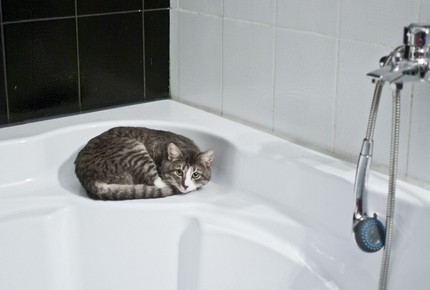
In order to protect the mucous membranes and skin from chemical burns when working with reagents, it is worth equipping properly, wearing safety glasses, oilcloth apron and rubber gloves.
Effective folk way
Time-tested folk remedy will help to eliminate the problem. A good effect is given by a solution of soda ash with vinegar. Soda, reacting with acid, produces a large amount of carbon dioxide. In a confined space, he pushes the mash.
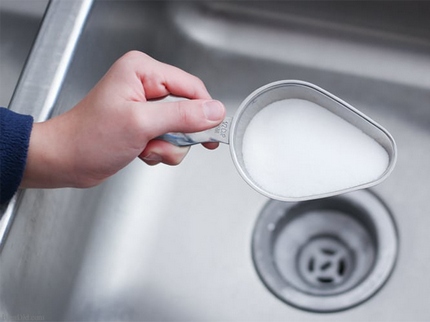
Instead of vinegar, it is allowed to use citric acid or freshly squeezed juice of one lemon. In any case, the cooked product does not “hit the wallet” much.
The sequence of actions:
- ½ packs of baking soda are poured into the drain hole.
- After 10-15 minutes, when the powder is compacted, half a glass of vinegar is poured into the hole.
- When the chemical reaction begins, the hole is covered with a stopper.
- After 60-90 minutes after the completion of "drilling", the tap is opened and 5-6 liters of hot water are poured into the hole.
The method involving soda and vinegar is effective only to eliminate blockages located close to the drain. The farther the cork, the lower the pressure force of the emitted gas.
How to prevent future problems?
In the future, regular prevention will help to avoid trouble. To protect the piping system from the accumulation of mud lumps, the drain hole must be equipped with a simple device - a protective grill.
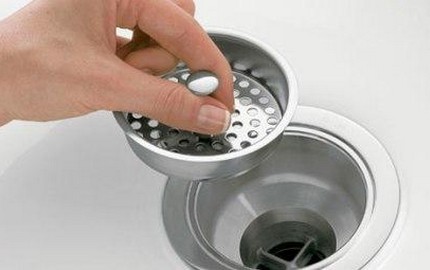
Weekly, it is also worth pouring small amounts of hot water into the drain. It will melt fat deposits, contributing to their further advancement on the highway.
The use of chemicals has a good preventive effect. To achieve the desired result, they should be used at least once every six months. But in order to minimize the risk of damage to the pipes, they should be used in accordance with the instructions.

To minimize the risk of formation of mud seals, it is recommended to periodically disassemble and flush the siphon elements.
Conclusions and useful video on the topic
Video # 1. We remove the blockage with improvised means:
Video # 2. Pipe cleaning with plunger:
Video # 3. Pipe cleaning using a cable:
Proper operation of plumbing equipment in conjunction with regular preventive measures will prevent the occurrence of “traffic jams” and extend the life of the system.
And how did you eliminate the blockage in the sewer pipes of the bathroom? Perhaps in your arsenal there are tools and methods that are much more effective than the methods we have proposed. Please write comments in the block below, post a photo on the topic of the article, ask questions about interesting points.

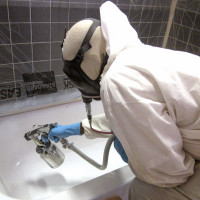 How and how to paint a cast-iron bath: an overview of the best restoration methods
How and how to paint a cast-iron bath: an overview of the best restoration methods 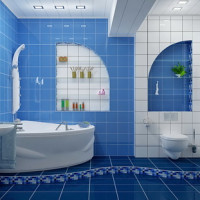 Do-it-yourself waterproofing in the bathroom: a comparative overview of materials + installation instruction
Do-it-yourself waterproofing in the bathroom: a comparative overview of materials + installation instruction  Shower cabin with sauna: how to choose the right one + review of the best manufacturers
Shower cabin with sauna: how to choose the right one + review of the best manufacturers  Bathtub for two: rules for choosing a double bathtub + review of the best manufacturers
Bathtub for two: rules for choosing a double bathtub + review of the best manufacturers  How and how to wash a shower cabin: a detailed overview of the best detergents
How and how to wash a shower cabin: a detailed overview of the best detergents  How to wash a cast-iron bath without damaging enamel: a review of folk recipes and the best purchased products
How to wash a cast-iron bath without damaging enamel: a review of folk recipes and the best purchased products  How much does it cost to connect gas to a private house: the price of organizing gas supply
How much does it cost to connect gas to a private house: the price of organizing gas supply  The best washing machines with dryer: model rating and customer tips
The best washing machines with dryer: model rating and customer tips  What is the color temperature of light and the nuances of choosing the temperature of the lamps to suit your needs
What is the color temperature of light and the nuances of choosing the temperature of the lamps to suit your needs  Replacement of a geyser in an apartment: replacement paperwork + basic norms and requirements
Replacement of a geyser in an apartment: replacement paperwork + basic norms and requirements
Folk remedies, as I was convinced, are ineffective, stopped using them. If the blockage is small, then I use a plunger. Of the chemicals, I most like Chistin, but Mr. Muscle has not justified itself. Darling, but a little use. Although it has a pleasant smell, it completely repels the rest of the aromas. If they do not help, you have to call your husband. He always copes with this problem in my pipes.
Usually, we have products like “Mole” to cope with blockages, but if the chemical options do not help, then the husband takes on cleaning the drain mechanically. It spins the drain as far as possible, gets to the pipe and cleans it with a special thin cable. The main thing is to carefully so as not to punch an extra hole anywhere, now all the pipes are mostly plastic. Plungers in this case are absolutely useless thing. We cope on our own.
I agree that there is no better way to clean a pipe than a plumbing cable. To disassemble the pipe for this is not necessary, only if the blockage is absolutely fierce.